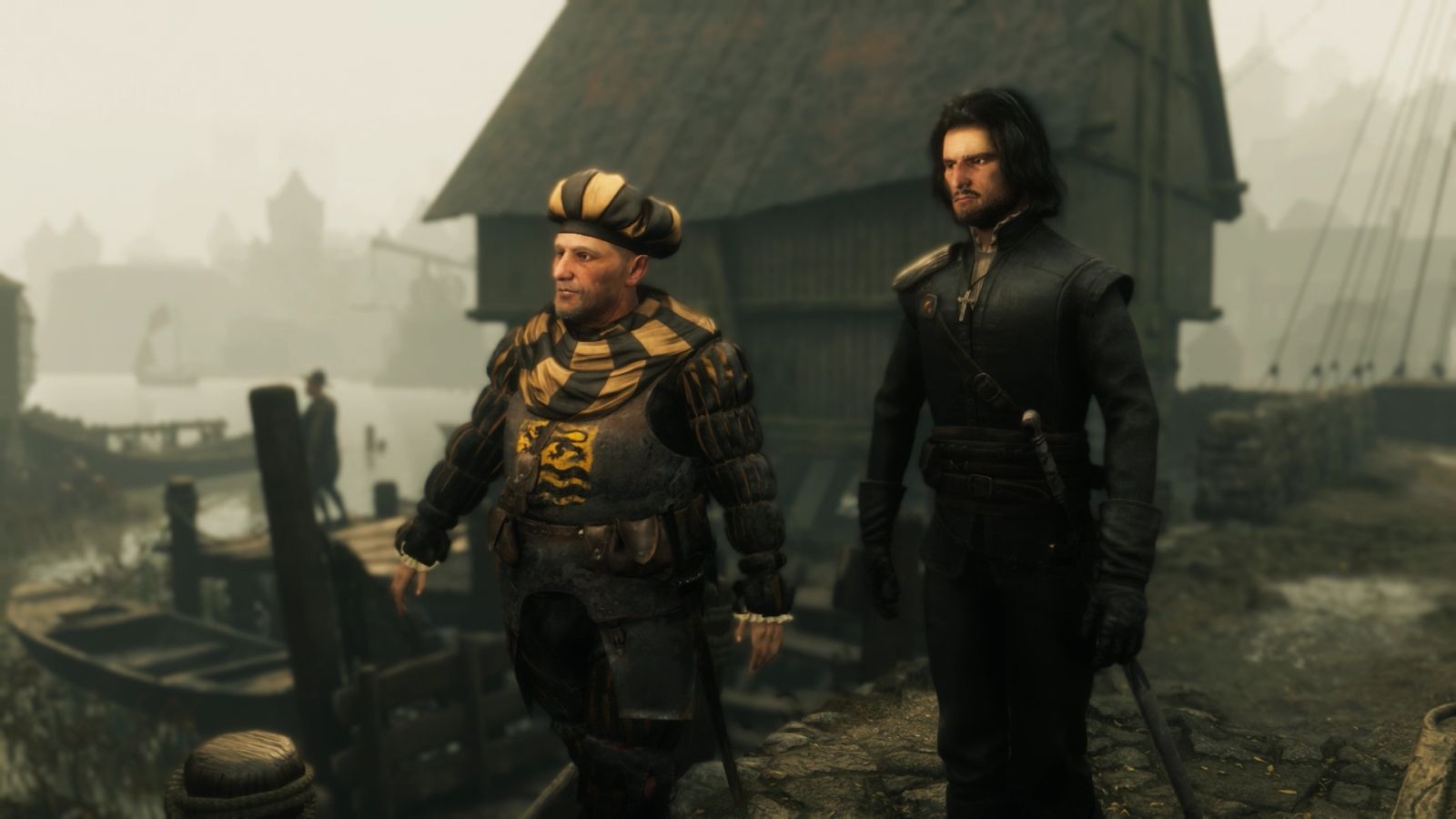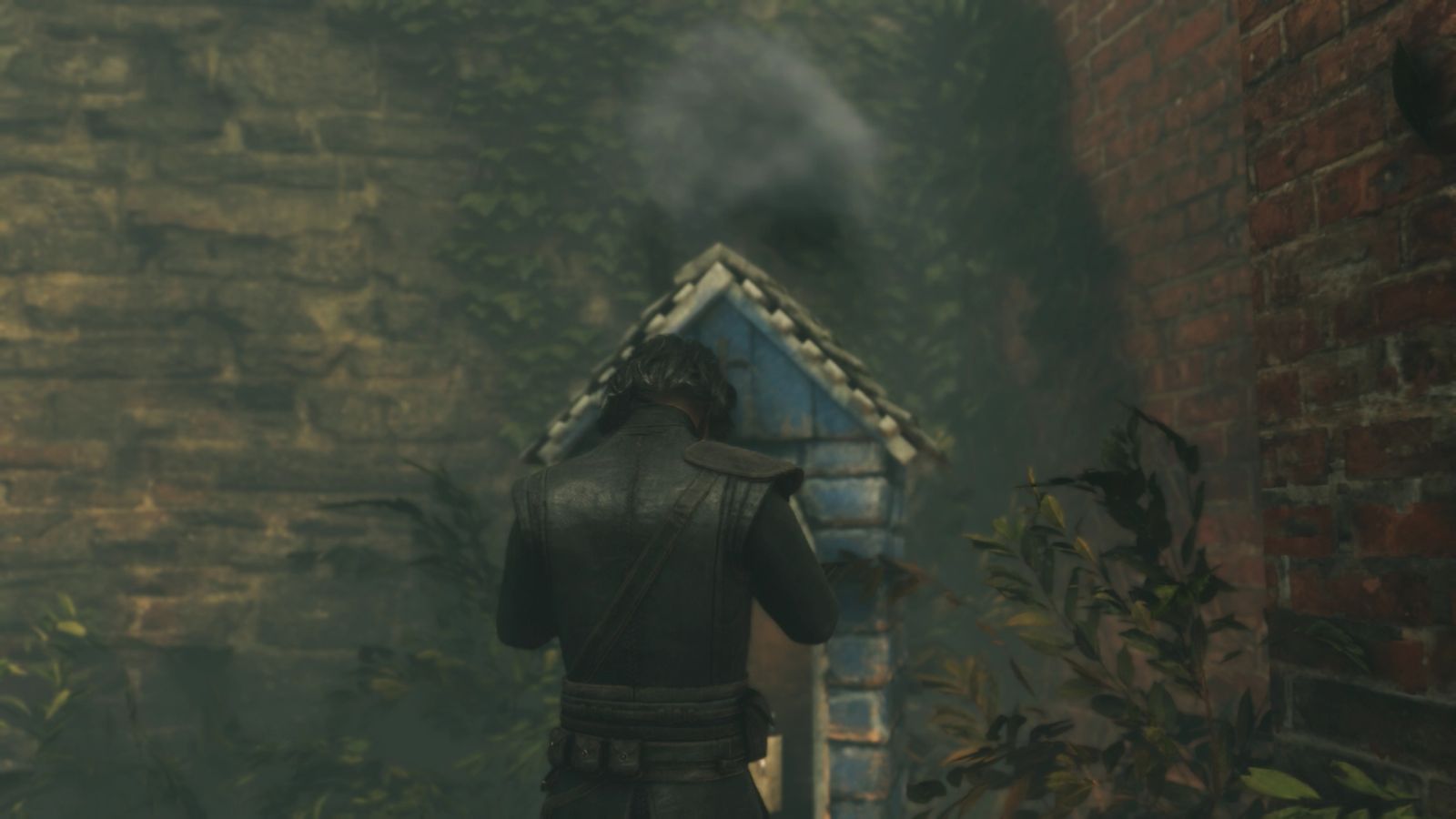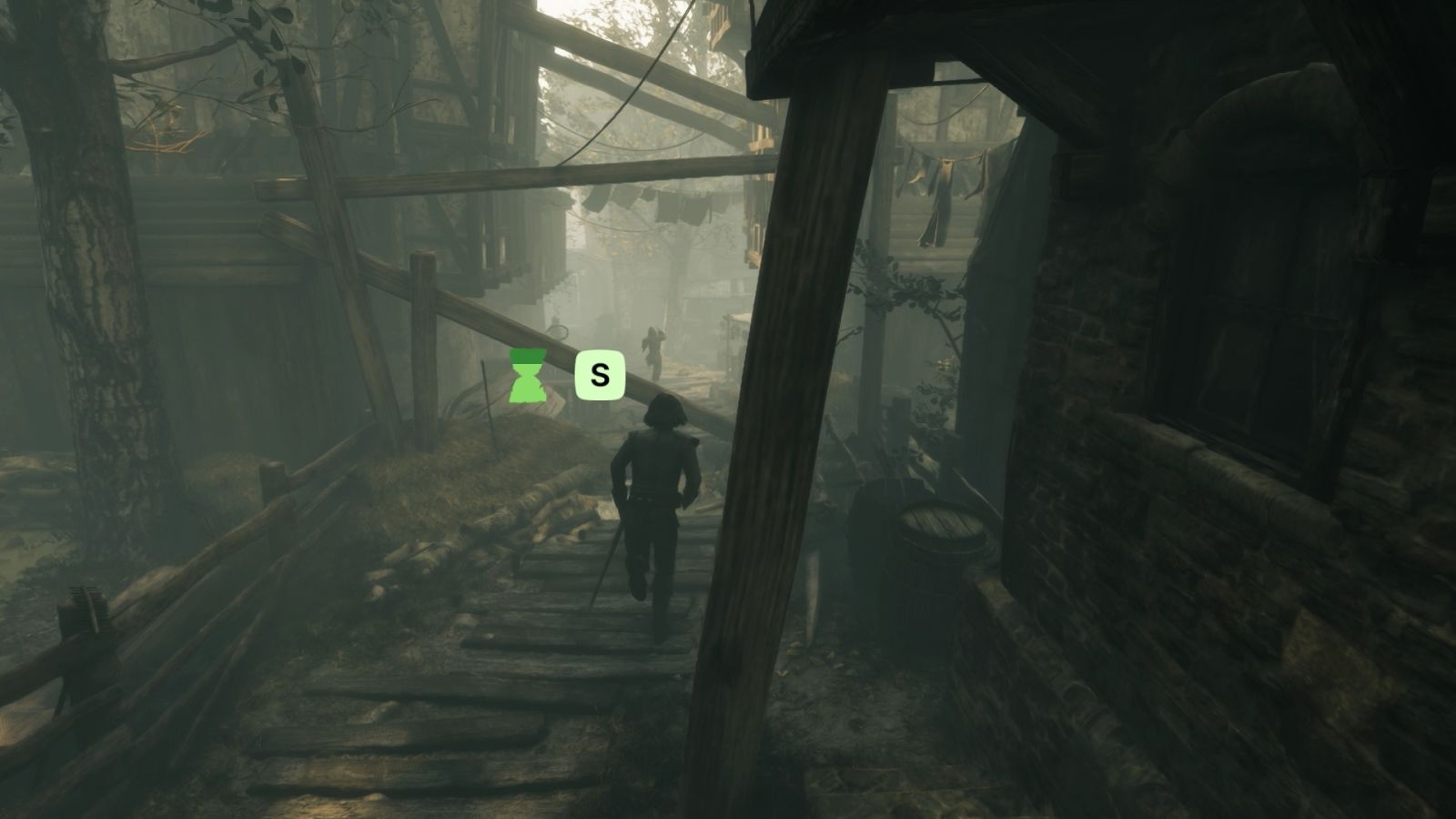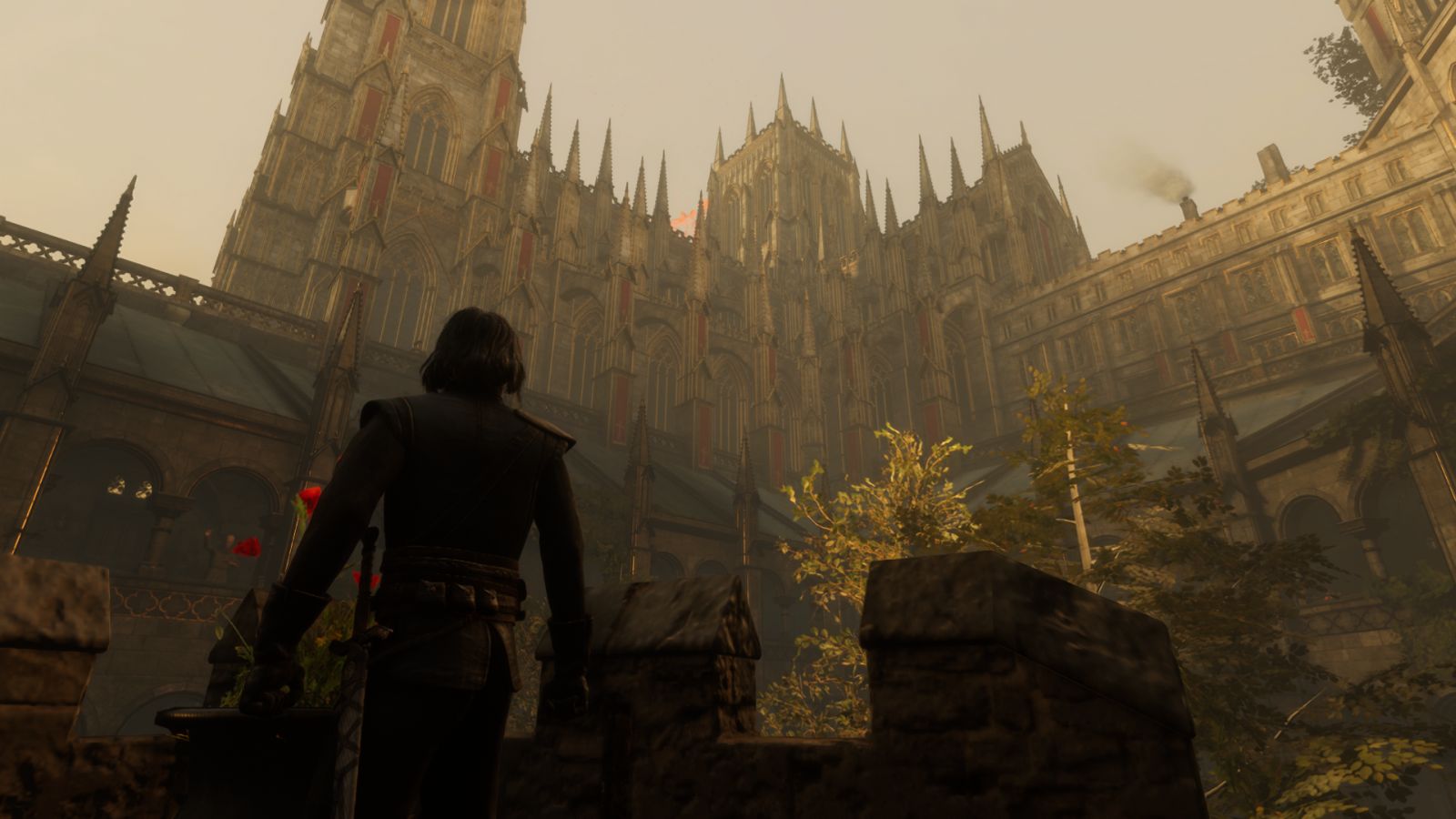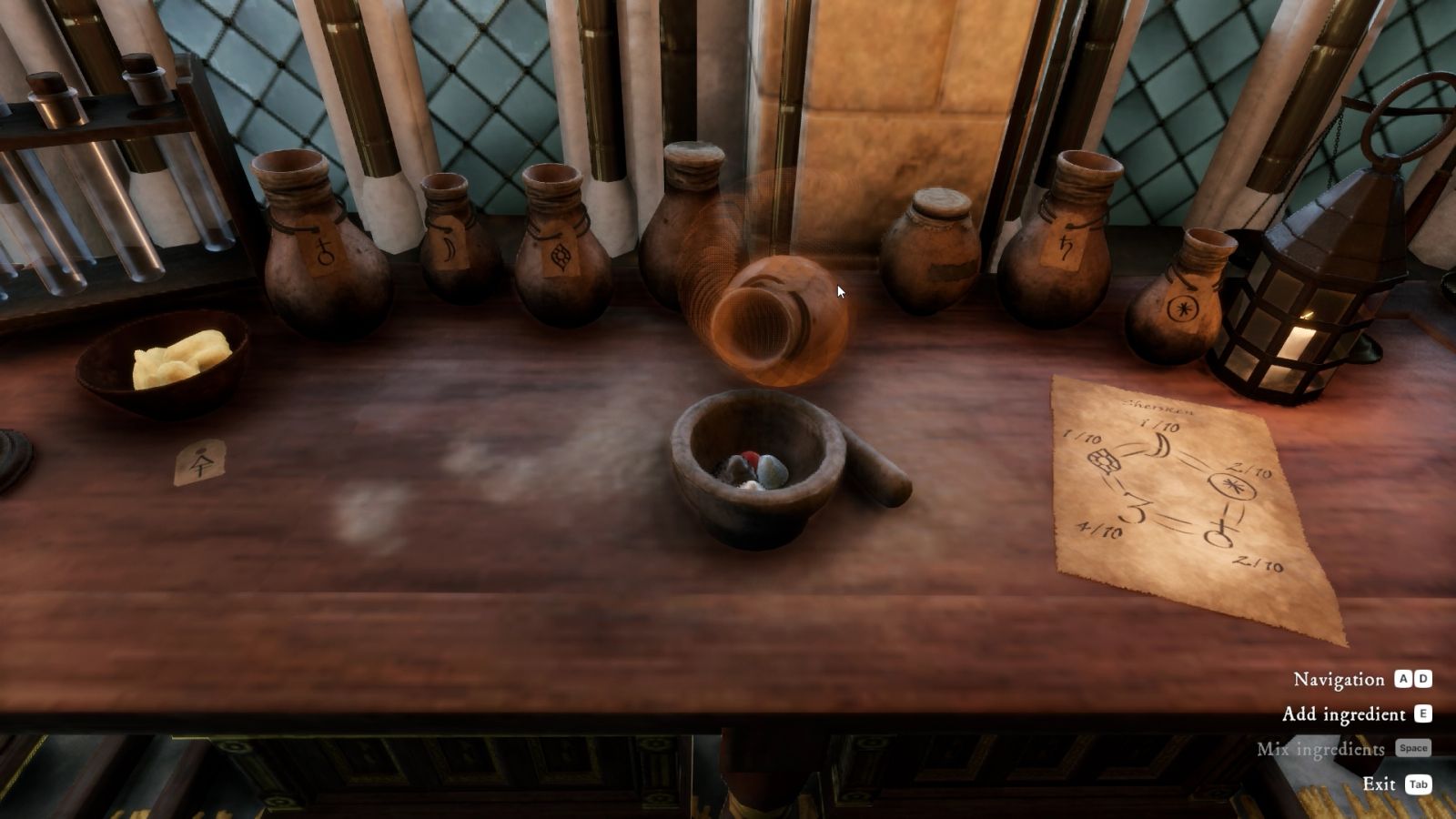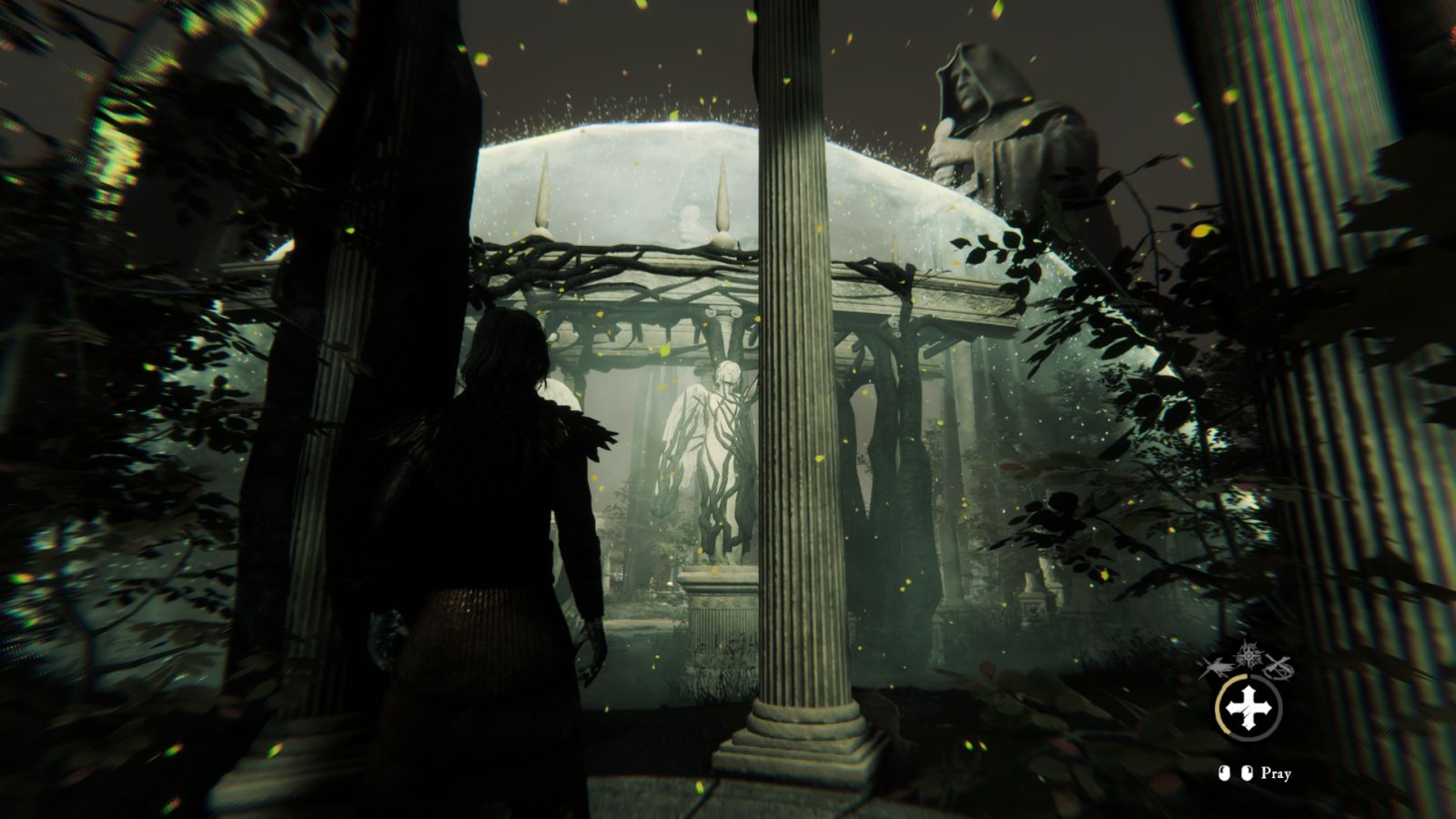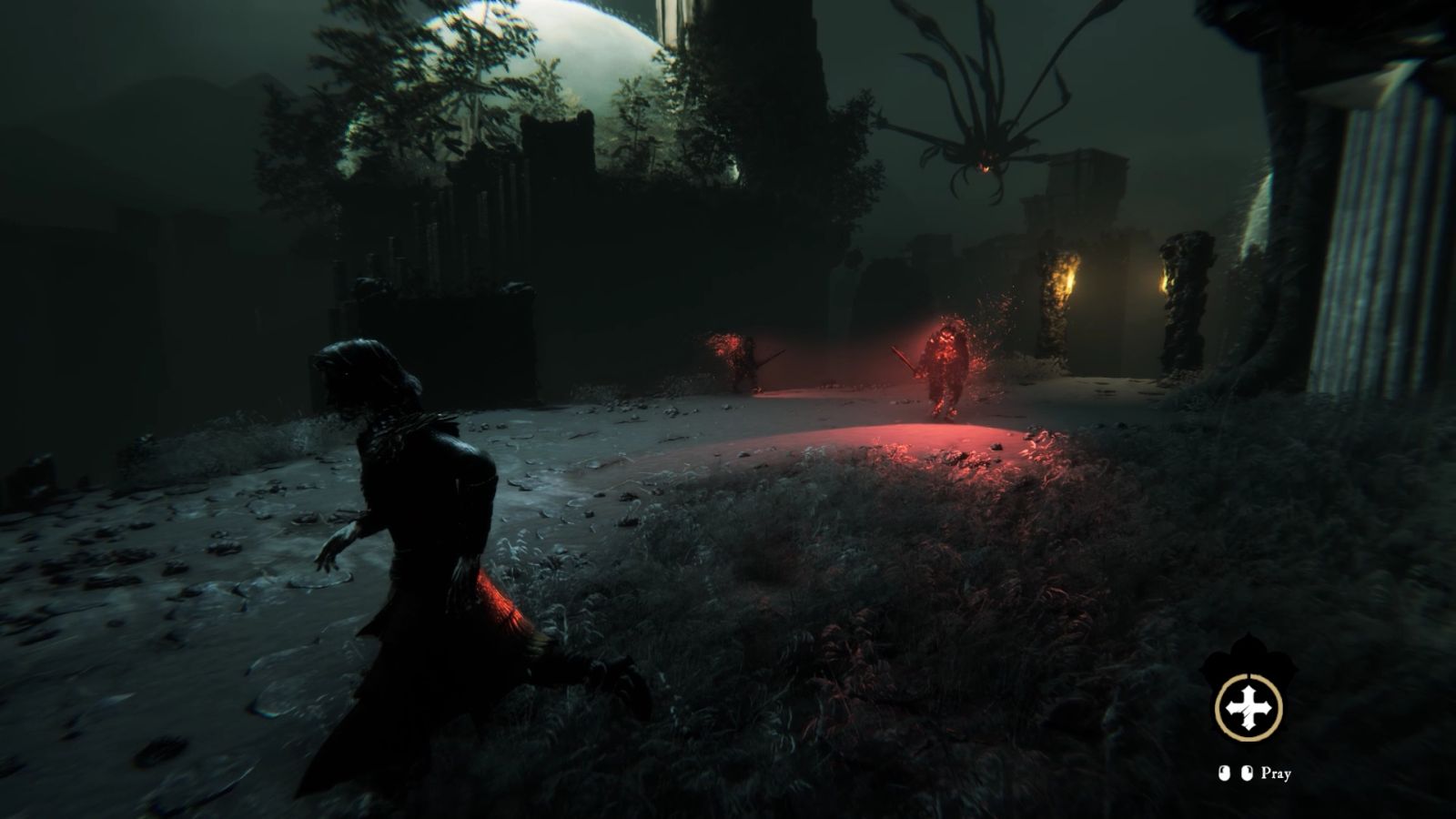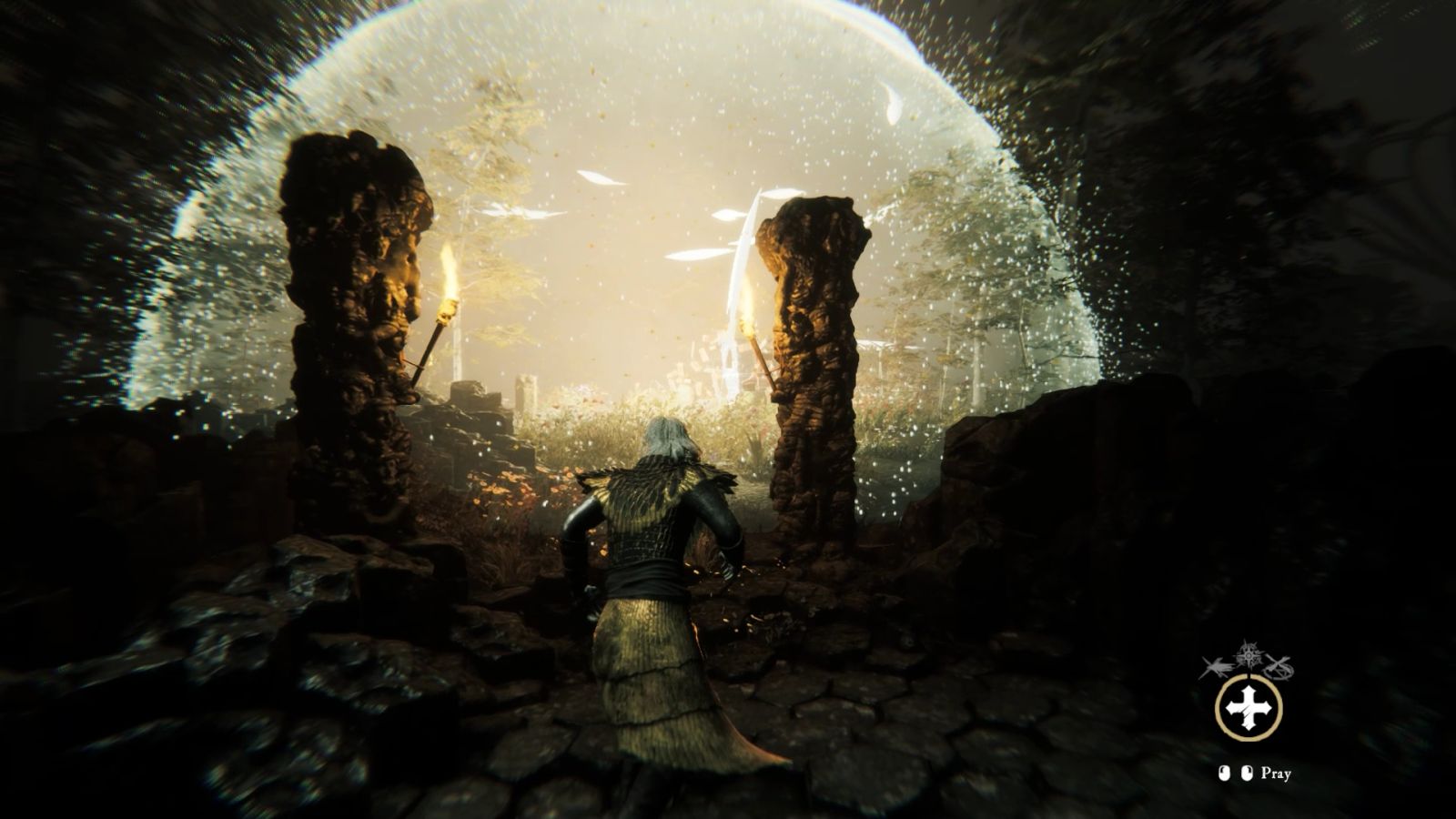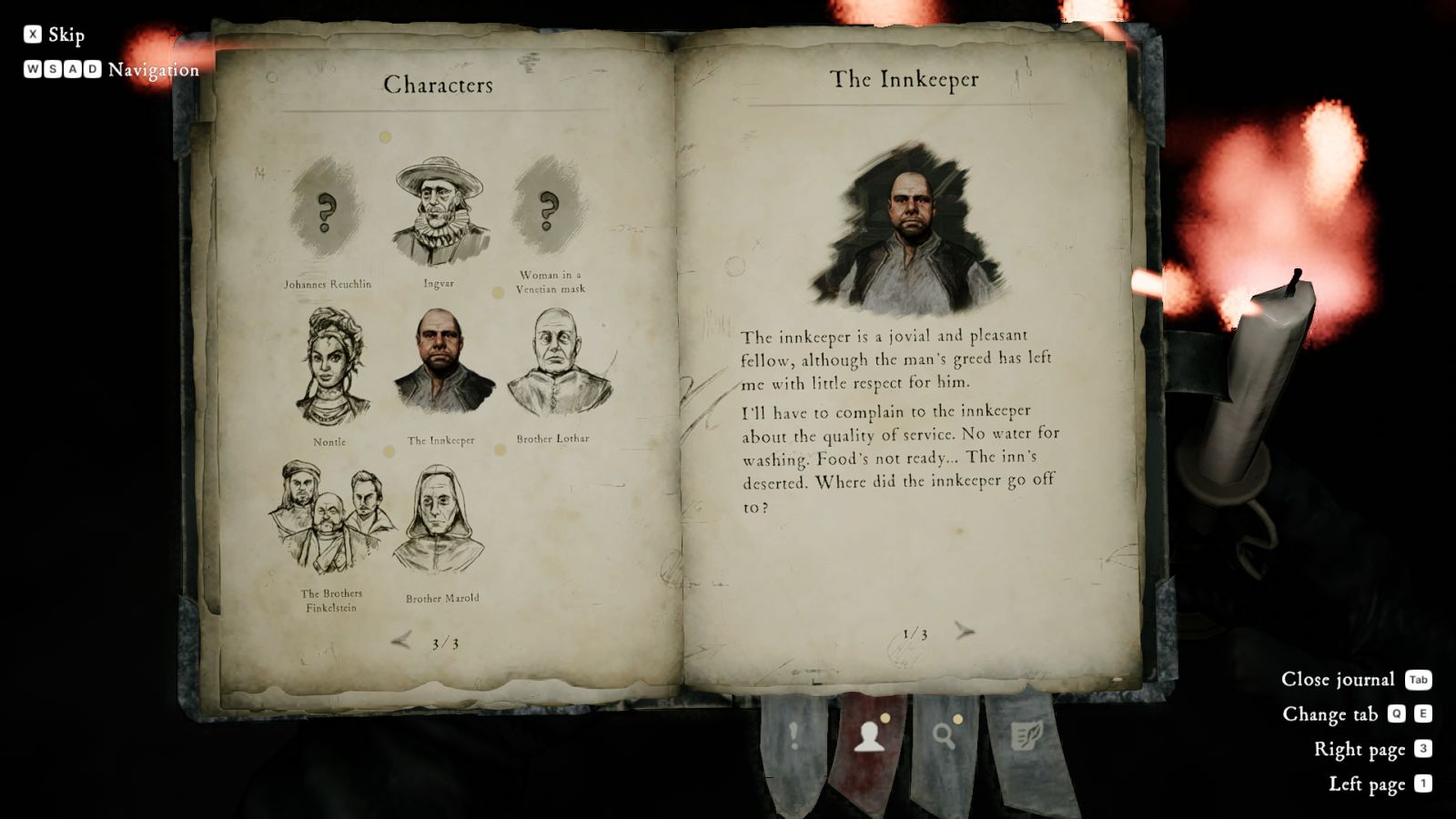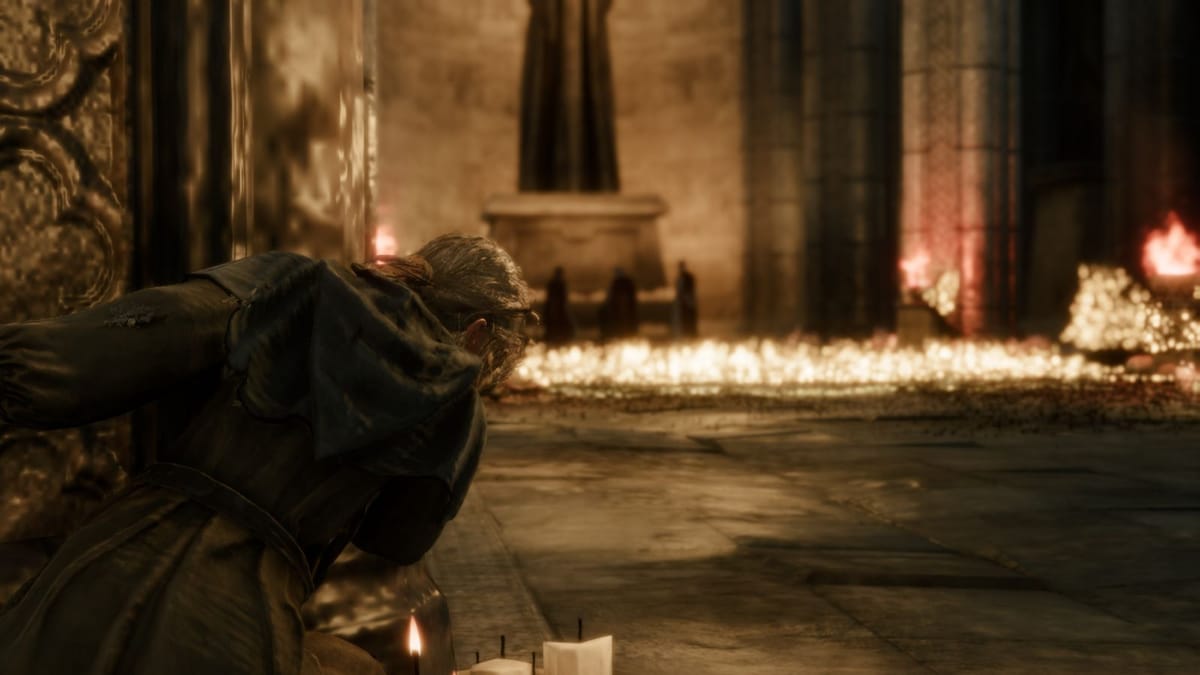
There’s something so alluring about a good mystery game. It hooks you, then drags you down deeper and deeper into the investigation, feeding you small bits of information, not too little, not too much. You put the pieces together to uncover something greater and the strings on the evidence board start to align. Then comes the pivotal moment where the cards are laid bare and everything is revealed. If formulated well, a mystery can offer satisfying feelings of accomplishment and a rewarding narrative to boot upon completion. That being said, when I first came across the Steam page for The Inquisitor, a dark fantasy adventure game with a mystery at its heart, I was intrigued. Developed by The Dust S.A. and published by Kalypso Media, the game promises a lot, but will it live up to the hype?
You play as Mordimer Madderdin, an inquisitor whose hunt for the heretical beings brings him to the city of Koenigstein in the year 1533. In this case, there’s a vampire he’s searching for, but with a lot of ground to cover. The city is divided into four parts, the cramped, decrepit town and harbor area, the bright, jovial town center, the reverential church district, and the sprawling palace of the Countess. You step onto the harbor and talk with the guard captain, Bertram regarding the situation at hand. He directs us to the mayor, who’s awaiting our arrival at the town center where a fair is being held.
If your first thought when you see the game is, “Wow, that looks a lot like The Witcher,” then you’d be spot on. The Inquisitor and The Witcher share a lot of the same DNA. Both games are based on novels by Polish authors, take place in a dark fantasy medieval setting, and feature a gruff sword wielder with a special insignia who hunts down the things that go bump in the night. Witcher sense? Nope, you have the power of prayer! Praying will guide you to where you need to go via a beacon of light, and objects of interest will be highlighted.
You’re introduced to these little praying areas pretty much right away. Upon interacting with the shrine, it will prompt you to activate it to replenish your prayer energy. This is a lie. There is no prayer energy, you can pray as much as you want, and you’ll never run out. I assume it’s a relic from prior plans, but here it serves as the first sign of things to come. For a second I thought they were used to save your game, but there’s no manual way to do that, it’s all autosaves.
So then, what are they good for? Well, every time you interact with these prayer sites Mordimer will say a line that sounds like it’s straight from Shadow The Hedgehog’s rendition of the Old Testament, it’s really edgy. If you’re wondering “What’s with the jagged cross?” Well, The Inquisitor takes place in a world where Jesus chose violence, broke himself off the cross like a Baki villain, and proceeded to exact his holy vengeance on the nonbelievers. That’s pretty metal, and it leads to some cool lore which I wish were explored a little more than was.
You barely make it up the street before you’re given a taste of Koenigstein hospitality. In a scene taken right out of Assassin’s Creed, a thief steals a pouch off my belt and I have to chase after him. There’s so much wrong with this sequence, and it represents everything that’s wrong with the game. I pass a quick time event to dodge a falling beam, then proceed to body it and keep running. Speaking of QTEs, I don’t think my prayers are working, because God is throwing everything but the kitchen sink at me to let this kid escape. He’s clipping through people as he dashes away, and one guy despawns in front of me. The first time I played it, the kids’ running animation made me laugh so hard that I failed the quick-time event. I couldn’t even be mad. On my second playthrough of the game, I completed it. Even if you make it to the end, the thief just disappears into thin air.
When Mordimer gets robbed he says something about the item. At first, I thought Mordimer was saying, “sheep skin” when referring to the stolen pouch, as in a sheep skin coin pouch. What he’s really saying is “Sherskin,” a powder used by Inquisitors for healing themselves and incapacitating their enemies. Apparently, it’s a top-secret formula and the unauthorized production of it is a high crime. So why then, does Mordimer respond to the thief who stole it escaping with, “So be it, I’ll get him some other time.”
This short scene is representative of the rest of the game. You’re chasing a child driven to thievery through grimy streets with corpses hanging from every available post, it’s an incredible opening display of the dark setting. Yet, I can’t get immersed because of the countless bugs, janky animations, and the plot hole sprinkled on top. We’re about 5 minutes into the game.
That’s not to say that this game doesn’t have strong suits. Some of the set pieces are stunning in scale and aesthetic. There’s also plenty of diversity between the locations. Going from the opening shanty town to the city square where the fair is held looks like the architecture has jumped at least a century forward. We go from dilapidated wooden dwellings to red-brick townhouses in the span of walking through a gate. Given how often you’ll be bouncing between these areas throughout the course of the game, it’s nice that they’re so interesting on a surface level.
On the other hand, the setting suffers from being as wide as an ocean, deep as a puddle. There are signposts that point you in the direction of points of interest, like the brothel, tavern, and harbor, but you can’t interact with any of those locations until the story calls for it. I don’t even remember ever going to the arena that’s listed on the post. Other than that, there are various collectibles scattered about. They take the form of nailed pieces of paper detailing the goings on of the area. At the end of the day, there’s almost no reason to do anything other than move from point A to point B. There are also secret tunnels that do the same, but I couldn’t even interact with them at times. Very occasionally you’ll run into short side quests, but I can only remember two instances of that happening.
At some point, you will look closer and a lot of models look like they’re generations behind. This goes double for the character models, some of them look downright awful, like a twisted creation out of a Bethesda game’s character creator. The Cardinal looks like someone tried to draw and quarter his face, and his head is always slumping like his neck is broken. Some of the graphical issues are in your face, I mean literally in your face. At one point I was talking to Captain Bertram and the words from a piece of paper posted on a board behind Mordimer were printed on his forehead. That’s not all, when you track people in this game, an orange trail will appear that leads you to them, but for some reason, if it touches the edge of the screen it releases a possibly seizure-inducing flashing effect.
Other times the world almost entirely broke, like when I exited a building and was faced with a wasteland of invisible buildings, an ominous orange skybox, and odd, broken geometry. I only overcame it by navigating what was basically a maze with invisible walls, going to another zone, and reloading the area. Another time, I loaded into the game locked in place and facing another barren wasteland with a cathedral and trees flickering in and out of existence in the sky. That’s not to mention the numerous crashes and frame rate drops. Visual bugs in this game are the rule, not the exception, and they permeate almost every scene.
The gameplay of The Inquisitor ranges from okay to lackluster. It boils down to four main categories of gameplay: combat, puzzles, dialogue, and the Unworld. Combat takes the form of sword fights. You only have one sword throughout the whole game, but it’s more than enough to get the job done. Its hilt is jagged to resemble how the cross was mangled after Jesus freed himself, it’s a nice little detail. You can dodge, block, parry, and perform light and heavy attacks on your opponent, but to be honest, I rarely came across a situation where spamming light attacks and dodging was insufficient.
Enemies might land the occasional attack on you, but the UI is bereft of any sort of health bar. Instead, your screen will get progressively more caked in blood to show you’re taking damage. Your opponents can also dodge, so it can lead to some awkward moments where you swing, and the blade visually connects, but they’re technically dodging so they take no damage. A few times I had an enemy against a wall while I was hacking away, but since they were dodging my attacks phased through them, and that led to some attacks feeling floaty and awkward. It’s clear the combat system needed more time in the oven.
That being said, I have to hand it to them, the sound design for fights is clinky and satisfying, and successful hits feel meaty and impactful. There are sections that have you fighting armored enemies, and plates gradually break off as you fight them. It was really cool, but it only happened twice, and both times the fights were optional. What about the inquisitor’s secret weapon, sherskin? Well, it’s tantamount to pocket sand. You can throw it at your enemies to open them up for attack, or rub it behind your ears to heal yourself, it’s a weird substance. You can only use it three times in a fight, and it somehow restocks itself between battles.
Occasionally you’ll be torn out of combat for a cutscene, this can be jarring, especially since it happens in practically every boss fight. Even though the choreography is great, I’d still prefer to maintain control over Mordimer, especially since you can fight well, then the cutscene plays as an excuse to give whoever you’re fighting the upper hand. A lot of cutscenes feature quick-time events, which just feels like a lazy way to try and spice things up when I was having a marginally better time hacking away at enemies. This game loves throwing QTEs wherever it can, and it can get pretty dull. Overall, the fights show glimpses of potential, but they’re squandered by a lack of any real difficulty, awkward I-frames, and frequent losses of player control during boss fights.
Another big part of the game is solving puzzles. Most of them boil down to using a nearby reference to complete a basic problem. Most of the puzzles are elementary, which can conflict with the story at times. Minor spoiler warning for the rest of this paragraph and the next. At one point I was trying to break into the Cardinal’s office in a library, an area that’s supposed to be highly restricted. There were only two puzzles standing in my way. The first was a slide puzzle in the sacristy, which is unguarded despite the fact that the game has a sneak system. The Slide puzzle gives you the code to open a locked drawer, that gives you a key, to open the closet the slide puzzle is on, to get another key.
The second puzzle is matching the Cardinal’s rings on a replica that’s outside of his office. This would prove a slightly more interesting challenge, requiring the player to have paid attention to previous scenes. It would be. The game makes a note of showing you his rings in previous cutscenes, the attendant in the library outright tells you the secret is in his hands, and it’s a recognizable Christian phrase. The Cardinal even does you the favor of leaving them unattended in the same room as the first puzzle. In sum, the puzzles are underwhelming or tedious.
Another large portion of the gameplay involves conversing with the cast. You’ll be getting your bearings in this new city, questioning seedy characters, and casting punishments. This is one of the stronger aspects of the game. You’re an inquisitor, so your words carry a lot of weight, as you’re pretty much either above everyone else in the chain of command or operating separately from them entirely. The guards are at your beck and call and neither the royalty nor the church can command you, but they can deny your requests. That being said, you have to be careful what you choose to say in a conversation, as you could inadvertently get someone killed. Sometimes you’ll choose a dialogue option, and it turns out to be way more aggressive than expected. At one point I meant to chastise the innkeeper for implying I should pay him for information, but Mordimer pulled a knife, slammed him against a table, and threatened to send him to God.
Another integral, yet poorly explained system is the stalling conversations, where you have to choose the right dialogue options to prevent something bad from happening. I replayed these countless times and never got a single one right. In one scene a young man is threatening Mordimer with a crossbow for killing his father, so you have to slowly close the gap. Every single time the kid would just back himself into a well and drown, and Mortimer would just shrug it off and walk away. The kicker is, I didn’t even kill his father in that playthrough, it’s just bugged.
The voice acting was a high point for the game, and I especially enjoyed Mordimer’s performance. A lot of the cast have some strong voice talent behind them, especially Nontle, a woman who procures objects of interest for the Dutchess. The Merry Executioner was also a treat to listen to, as his actor did an excellent job of coming across as completely unhinged. I attribute some of the problems to the scripts themselves, as a few of the lines are clunky.
It’s time to go over one of the most interesting areas in The Inquisitor, the Unworld. First, some context. All of the gameplay elements mentioned are under the pretext of progressing the investigation. Your inquiry more directly takes the form of receiving visions from Jesus, listening in on conversations, tracking suspects, and searching crime scenes. However, sometimes results are inconclusive, and you need to resort to drastic measures. The Unworld is where you tie the investigation together. It’s a hazardous realm that feeds on humanity’s thoughts and emotions. It’s a reflection of humanity itself, and given the state of the world, it’s vile.
You have to traverse The Unworld and find five shards, each of which will reveal a small piece of information via a snippet of audio. Upon collecting all five, return to the start, and the full story is revealed. Standing in between you and the shards is the main antagonist of the Unworld, The Murk, a floating tentacle monster that darts around searching for those who enter its domain. Of course, The Murk isn’t alone in its hunt, as the “Murk’s Brood” stalk the winding crevasses and elevated isles you have to traverse. On top of that, there are environmental hazards, like falling off the edge of The Unworld or running into the Murk’s Veil, which is a hazy black substance that slows you and alerts enemies to your presence. It all sounds rather formidable, right? Wrong. Just about every part of the Unworld is a cakewalk.
Let’s start with The Murk. First off, its bark is bigger than its bite, literally. For some reason, it screams whenever you pick up a shard, but an audio snippet is supposed to play, so its howl drowns out what you’re trying to hear. The only way for it to detect you is if you enter its cone of vision, which is really easy to avoid given how slowly it moves and how much room you have to maneuver. Once you’re within its gaze it will detect you fairly quickly, unless you’re praying, which slows its perception and gives you more than enough time to book it. When in doubt, pray, it’s absurdly overpowered because it keeps you permanently in stealth. Sure, there are ways of countering the “threats” of The Unworld, but an ounce of prevention is worth a pound of cure.
The game drip feeds you new obstacles and counterplay options, like a flash ability that stuns enemies, a purification ability that cleaves through Murk’s Veil, and even a medium-range blink that lets you teleport instantly. The catch is, “Light”, the resource you use for abilities is your health bar, so whenever you activate an ability you’re using your health to cast it. That would be an interesting tradeoff, but the baseline of difficulty is so low that it doesn’t matter. The Murk saw me maybe two or three times in an entire three playthroughs of the game, and even then I’d just stun it and run away. Murks Veil becomes more obtrusive over the course of the game. It starts at the edges of the map to bottleneck the player, forcing them to consider using the purification ability to cut through it and circumvent enemies. Later in the game, Murk’s Veil forms in lines that block your path, so you pretty much have to use an ability. The problem is, moving through it normally only slows you down a little bit and somewhat attracts enemies, so neither the starting or end game formations of Murks Veil are really a threat. They even add a damage-over-time effect as a final evolution, but the cost of purification is so low that it doesn’t matter.
Then there’s the Murks Brood, who are supposed to be the imposing patrolmen of the Unworld. Their detection radius and follow-through are weak, running straight past them or walking by while praying was enough. Even if they do catch you, they die in a few hits and restore some of your health upon defeating them. If that wasn’t enough, they can be one shot from behind, and collecting a shard will destroy any of them in the area. The icing on the cake is that your praying mode regenerates your Light instead of draining it, so staying permanently in stealth is actively rewarded instead of coming at a cost.
If things weren’t easy enough, there are little bastions of safety called Light Wells that hide you from The Murk AND regenerate your Light. They’re not even out of the way, in fact, some of them are part of the path to the next shard. All you have to do is complete an easy quick time event to activate them, and even if you somehow fail there are no repercussions, just try again. You have to really try to mess up an Unworld section. The first time I died in the Unworld was when I tossed myself off a cliff to see what would happen, and it just set me back by one shard.
They keep trying to up the threat level, but it doesn’t matter when the foundation is so rocky.
The low difficulty of The Unworld is in harsh contrast with Mordimer’s voice acting, he frequently comments on how taxing The Unworld is on his body, and he’s clearly disoriented and out of breath when he leaves the realm. It really is a shame, because besides the low difficulty, it’s an aesthetic wonder. Modimer’s hair turns white, he takes on a ghostly pale complexion, and his normal leather inquisitor armor is replaced by black and gold scale armor that resembles the feathers of a raven. The whole zone has a kind of hidden grove feeling to it, with golden leaves constantly falling from the sky, contrasting the dark abyssal stone that makes up the walls of the Unworld. Overall it’s a haunting location without any real follow through in difficulty.
Despite the constant let downs in pretty much every department of the game, it’s not all awful. Some character interactions can be endearing, such as those between Mordimer and Amelia, the homeless child he befriends. There are also some pretty decent sequences such as the dungeon mission with the Merry Executioner. It’s chilling, and the animations for the executioner are unnerving and freakish, just as they should be. Although even then, the sequence has visual bugs and a lack of any real threat once you realize that you’re in no real danger.
That brings me to the story itself. Well, it starts off strong and rapidly declines towards the end. The initial intrigue is there, as Mordimer finds himself surrounded by odd events, shifty characters, and royal intrigue. Everyone has a motive for their actions, and it’s up to you to connect the dots. Luckily, Mordimer carries around a journal where he keeps notes of events and profiles on everyone he meets. For example, the Duchess and Cardinal hate each other, leading to a lot of finger-pointing, and power plays, thus thickening the plot. On another note, the presentation can leave something to be desired, as some scenes feel pretty contrived, and a lot of the time the logic isn’t there, especially towards the end of the game.
I played through the game three times total and got two different endings. At one point, the game bugged out on my second playthrough, and filled in a journal entry with an alternative series of steps I could have taken for a different ending. Apparently, it was locked behind one of those stalling conversations, but I didn’t find it, and I looked. When I say I looked, I mean I looked. There are five sets of questions with two possible choices in each, totaling 32 possible combinations. Given that some answers lead to instant death, that shaves a few paths away. After completing every single possible combination of answers, I verified that the third ending was either a lie or had some hidden condition that I hadn’t met. Given that I was extremely dissatisfied with the two endings I got before, I was pretty bummed.
In the end, the bones of the game are there, and some of the sinew is ok, but the flesh is practically melting off this tortured chimera’s poorly MOCAPed face. The story is initially interesting, but rapidly falls apart towards the end, and the constant bugs make it impossible to get immersed in what little there is to enjoy. Due to the heavy focus on story and choice, this game would benefit from replayability, if doing so weren’t such a chore. I really hope that at some point, there’s an overhaul or director’s cut, but as for now, the game languishes in mediocrity.
The Inquisitor
Below Average
The Inquisitor fumbles what could have been the premiere mystery game of 2024. Despite the strong setting and cast, the mystery rapidly unravels into nothing but noise, and the gameplay is bereft of difficulty. The never-ending stream of bugs means that whatever joy you can find in the game will most certainly be derailed.
Pros
- Choices matter
- Some endearing character interactions
- Good voice acting
Cons
- Poor balance makes the game far too easy
- Constant bugs, some game-breaking
- The story doesn’t make sense at times

